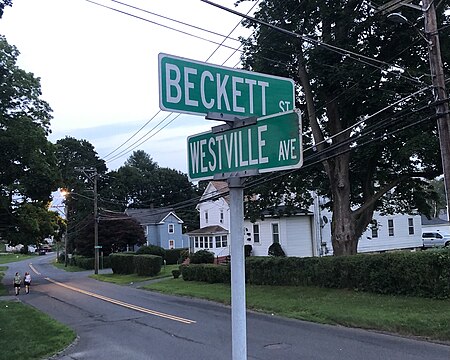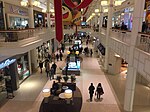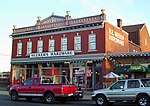The Main Street Historic District in Danbury, Connecticut, United States, is the oldest section of that city, at its geographical center. It has long been the city's commercial core and downtown. Its 132 buildings, 97 of which are considered contributing properties, include government buildings, churches, commercial establishments and residences, all in a variety of architectural styles from the late 18th century to the early 20th. It is the only major industrial downtown of its size in Connecticut not to have developed around either port facilities or a water power site.It was called Town Street when Danbury was first settled in the late 17th century. For over a century afterwards the "long, straggling street" was synonymous with Danbury, to the point that farmers in the area referred to it as Danbury Street. The Revolutionary War in that area of Connecticut began in the future district, where a marker indicates the first shot fired at the British. As the city began growing toward the mid-19th century, its development was shaped by the arrival of the railroads, which helped the city's hatmakers dominate their industry.
In the mid-20th century the area began to decline. Hats became less popular after World War II, causing the hat factories to close. The floods of 1955 took a toll, with some businesses choosing not to rebuild. Other businesses left later for a new shopping mall elsewhere in the city. Main Street was largely spared the demolition that accompanied urban renewal elsewhere in the country, and it was recognized as the city's only historic district and listed on the National Register of Historic Places in 1983. Its contributing properties, ranging from the 1780s to the 1930s, reflects a diversity of uses and styles with a heavy concentration of the Italianate commercial architecture of the late 19th century.
Today, downtown Danbury is once again thriving due to a variety of factors. Businesses formed a special taxing district to raise money for infrastructure maintenance and improvement, and the city used state grants to build popular attractions near downtown like a rail museum and ice arena. Danbury's population has also increased in the late 20th century as it became a popular exurban enclave for New York metropolitan area commuters, and Latin American immigrants have settled in and established businesses along Main Street despite tensions with the city's mayor.







